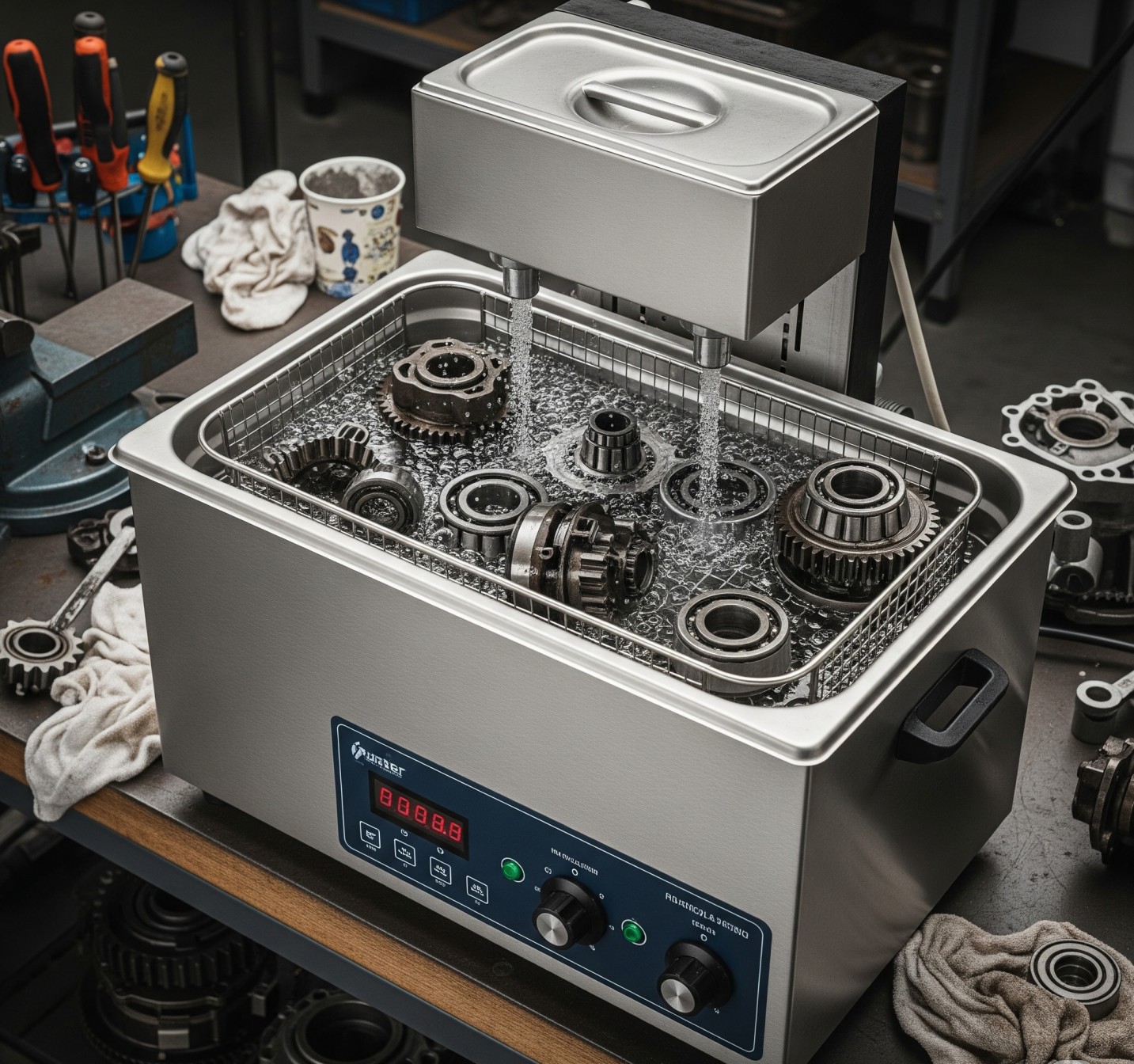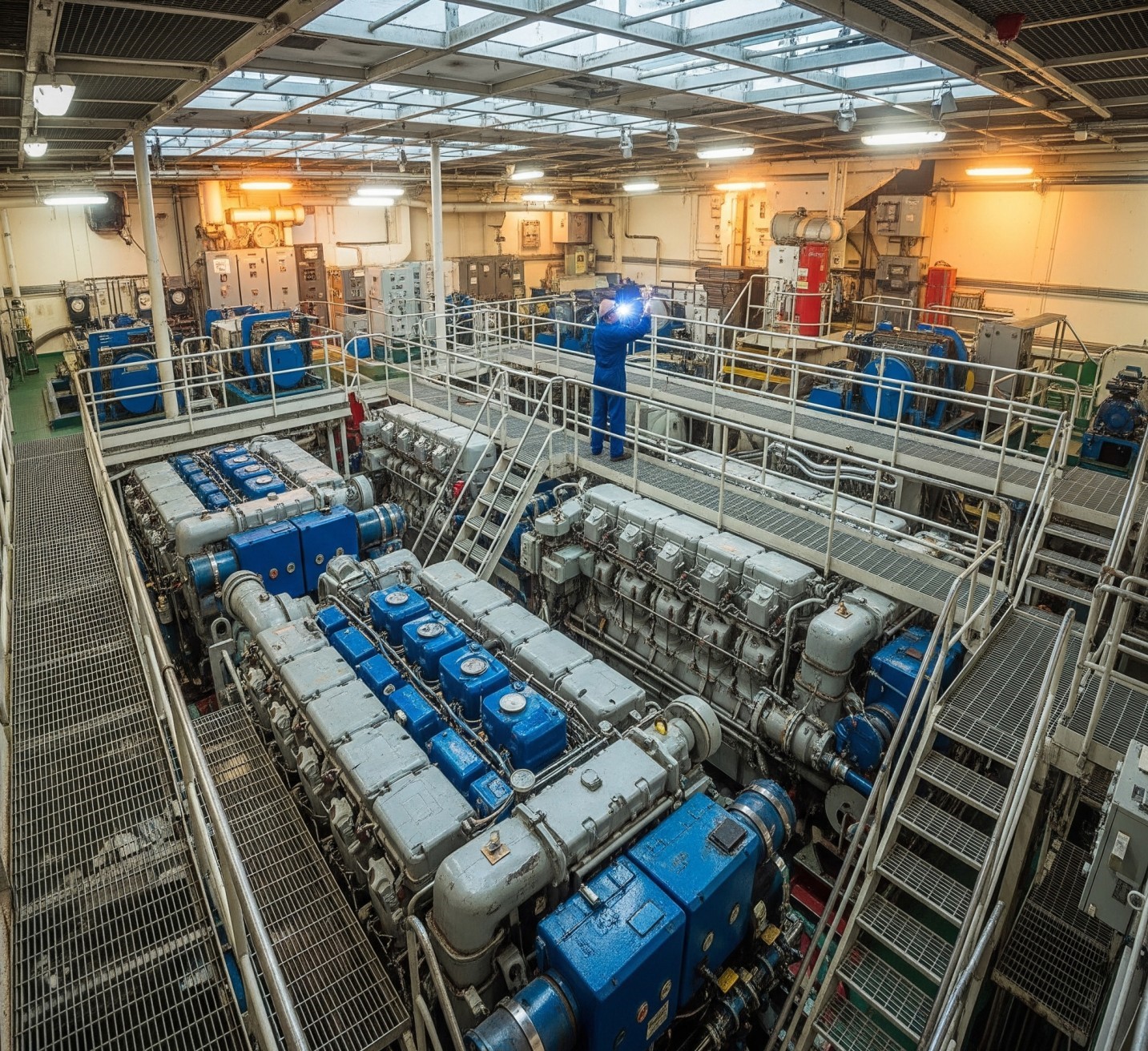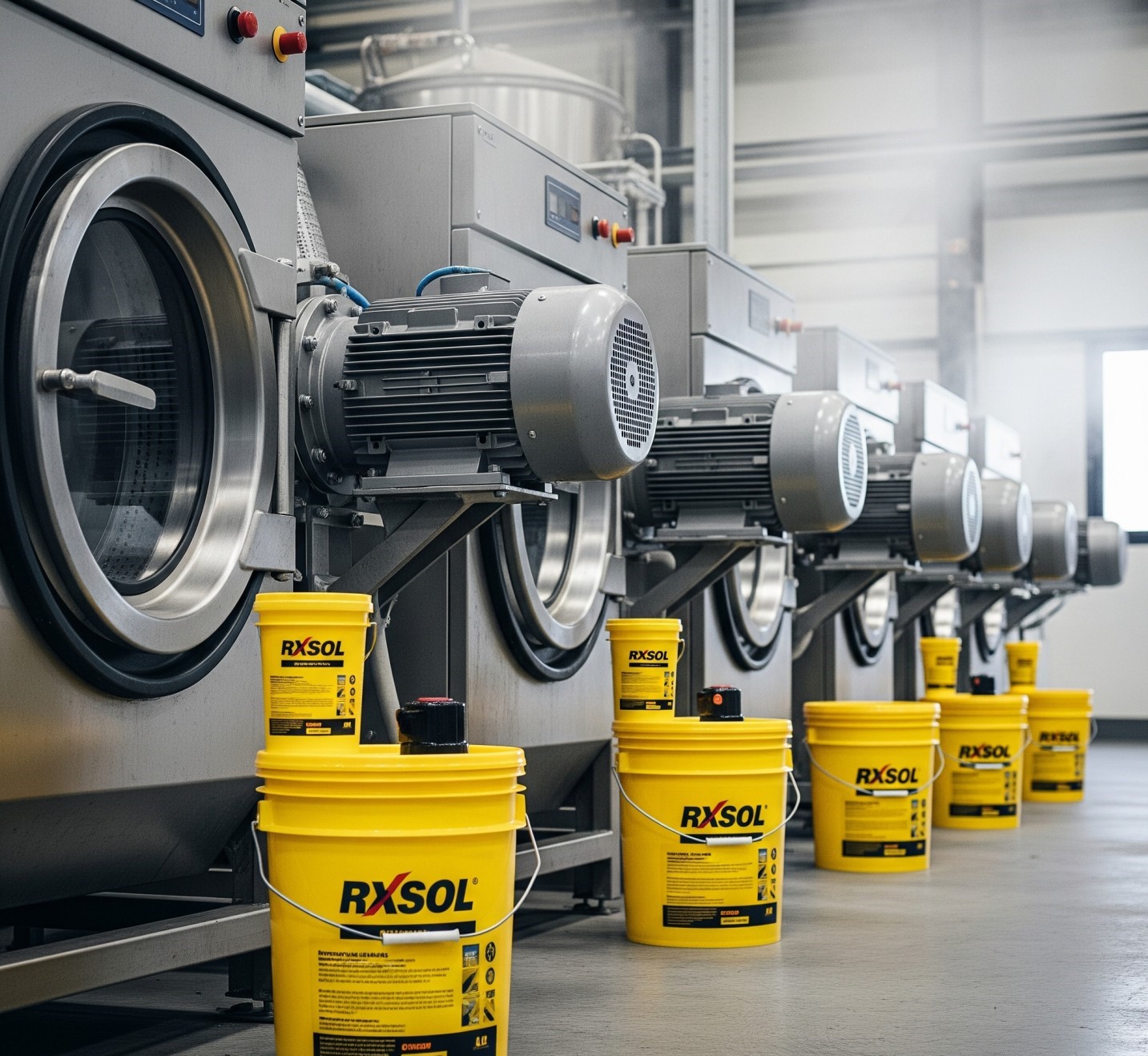Greenleaf Evaporator Coil Cleaner 25 Ltr,Veniklin-WB
Evaporator Coil Cleaner is a special blend of effective ingredients designed to penetrate and remove built-up grease, dirt and oxidation from finned coils, cleaning in one step. Evaporator Coil Cleaner DOES NOT CONTAIN ACID.
Buildup of greasy dirt on air conditioning or refrigeration cooling coils makes the units work much harder. Impeded air flow and poor heat transfer can put a sever strain on both the equipment and the pocket book. Cleaning removes dirt and greasy film from evaporator coils and enables the equipment to operate more efficiently.
Caution: Avoid contact with eyes, skin and clothing. This product contains organic cleaners and inorganic dispersants. Wear goggles and protective clothing. Do not breath mist. For external contact, flush with water for 10 minutes. If taken internally, drink large amounts of water, followed with milk of magnesia, beaten eggs, or vegetable oil. Call a physician immediately. KEEP OUT OF THE REACH OF CHILDREN. Before using of this product always refer MSDS.
It is a specially engineered condenser coil cleaner and brightener have safe bioderadable non acidic formula. this product is recommended for use in hotels, commercial complexes, hospitals, shipyards, Heavy Industries and it can be used indoors making it highly suitable for cleaning refrigeration units in shopping malls, food shops, supermarkets, butchers and wet fish shops. and any air-conditioning workshops or establishments that services air conditioning systems.
RXSOL-51-6004-025 Clean Evaporator coil is the first step in ensuring maximum compressor efficiency. Coil Cleaner has a foam that cleans heating and refrigeration coils, fins and fan blades. As the foam breaks down, it carries away dirt, dust, grease, oil and other residue
RXSOL-51-6004-025 coil cleaner will not corode coils and is safe to use on surrounding metals and other HVAC equipment components.
Cooling coils trap dust, soil, grime and other troublesome deposits that reduce the heat transfer efficiency of HVAC units. This build-up interferes with proper system operations. RXSOL-51-6004-025 Coil Cleaner effectively removes accumulated build-up, restores operating efficiency and prepares the unit for the control of harmful organisms with Greenleaf Aquacide QLF Microbiocide.
RXSOL-51-6004-025 Cleaner effectively cleans and deodorizes evaporator coils, heating coils, condenser coils, window units, air filters, blowers, and other dirty HVAC components. RXSOL-51-6004-025 Coil Cleaner is safe for all metal, including aluminium.
RXSOL evaporator coil cleaner is the perfect first step in improving compressor effeciency.
Use Instructions:
1. Protect eyes and skin with appropriate safety items.
2. May be used with unit on or off.
3. Use low pressure spraying tank.
4. Mix one part Evaporator Coil Cleaner to four parts water.
5. Spray Evaporator Coil Cleaner solution into coils and allow approximately a ten minute contact time for best results. Condensate will rinse coils. Rinse filters with clean water.
RXSOL brand is very popular as a Evaporator Coil Cleaner manufacturer. And our group division have Evaporator Coil Cleaner supplier network for manglore, Navi Mumbai, Goa, Mumbai, Kakinada, Gangavaram, Vizag, Visakhapatnam, Ennore, Chennai, kandla, mundra, sikka, Surat, Fujairah, Sharjah, Dubai, Abudhabi, Middle East, Gulf. we are RXSOL Evaporator Coil Cleaner exporter for Saudi Arabia, Iraq and Kuwait.
Coil Cleaning | Condenser Coil Cleaning | Evaporator Coil Cleaning
| Appearance | Greenish-yellow |
| Odor | Lemon scent |
| Solubility in Water | Complete |
| Specific Gravity | 0.990-1.000 |
| pH (l%) | 10.3-10.5 |
Other Grade of Coil Cleaner :::
Coil Brite Rx Yellow - Part No.- RXSOL-16-1680-005 --- www.rxmarine.com/coil-brite
Coil Cleaner - Part No.- RXSOL-41-8672-025 --- www.rxmarine.com/Coil-Cleaner-RXSOL
Coil Cleaner ( Non Rinsing Type ) - Part No. - RXSOL-16-1697-025 --- www.rxmarine.com/coil-cleaner-non-rinsing
Condenser Coil Cleaner - Part No.- RXSOL-50-5015-025 --- www.rxmarine.com/Condensor-cleaner
Evaporator Coil Cleaner ::: Part No.- RXSOL-51-6004-025 --- www.rxmarine.com/evaporator-coil-cleaner
Coil Cleaner Free from ACID ::: Part No.- RXSOL-16-1082-025 --- http://rxmarine.com/Coil-Cleaner-Free-from-ACID
C-SHINE Alkaline coil cleaner ::: Part No- RXSOL-16-1668-025 --- www.rxmarine.com/C-SHINE-RXSOL-coil-cleaner
What is EVAPORATOR PLANT ?
For production of fresh water Large ships usually carry evaporating plants.
Steam ships must be able to produce high-quality distillate in order to maintain boiler-water levels.
Diesel-engined ships often utilise waste heat as an energy source for producing fresh water. In this system, the engine-cooling water is passed through a heat exchanger, where it is cooled by concentrated seawater (brine). Because the cooling water (which is chemically treated fresh water) is at a temperature of 70–80 °C (158–176 °F), it would not be possible to flash off any water vapour unless the pressure in the heat exchanger vessel was dropped. To alleviate this problem, a brine-air ejector venturi pump is used to create a vacuum inside the vessel. Partial evaporation is achieved, and the vapour passes through a demister before reaching the condenser section. Seawater is pumped through the condenser section to cool the vapour sufficiently to precipitate it. The distillate gathers in a tray, from where it is pumped to the storage tanks. A salinometer monitors salt content and diverts the flow of distillate from the storage tanks if the salt content exceeds the alarm limit. Sterilisation is carried out after the evaporator.
Evaporators are usually of the shell-and-tube type (known as an Atlas Plant) or of the plate type (such as the type designed by Alfa Laval). Temperature, production and vacuum are controlled by regulating the system valves. Seawater temperature can interfere with production, as can fluctuations in engine load. For this reason, the evaporator is adjusted as seawater temperature changes and shut down altogether when the ship is manoeuvring. An alternative in some vessels, such as naval ships and passenger ships, is the use of the reverse osmosis principle for fresh-water production, instead of using evaporators.
MECHANISM of EVAPORATOR :::---
Lots of heat is absorbed in the process this is called the latent heat of vaporization and makes for very efficient heat transfer because the freon is vaporizing in this coil, it is called the evaporator coil Freon makes an excellent heat transfer material at atmospheric pressure, it is a colourless gas when it boils. absorbs a lot of heat when it condenses from a gas to a liquid, it gives off a lot of heat (this is helpful when discharging heat to the outside through the condensing coil)
¨ Economical - mix one part Evaporator Coil Cleaner to four parts water.
¨ Safer than acid cleaners.
¨ Cleans coils in one step - no rinsing needed.
¨ High foaming for faster penetration
Diesel-engined ships often utilise waste heat as an energy source for producing fresh water. In this system, the engine-cooling water is passed through a heat exchanger, where it is cooled by concentrated seawater (brine). Because the cooling water (which is chemically treated fresh water) is at a temperature of 70–80 °C (158–176 °F), it would not be possible to flash off any water vapour unless the pressure in the heat exchanger vessel was dropped. To alleviate this problem, a brine-air ejector venturi pump is used to create a vacuum inside the vessel. Partial evaporation is achieved, and the vapour passes through a demister before reaching the condenser section. Seawater is pumped through the condenser section to cool the vapour sufficiently to precipitate it. The distillate gathers in a tray, from where it is pumped to the storage tanks. A salinometer monitors salt content and diverts the flow of distillate from the storage tanks if the salt content exceeds the alarm limit. Sterilisation is carried out after the evaporator.
Evaporators are usually of the shell-and-tube type (known as an Atlas Plant) or of the plate type (such as the type designed by Alfa Laval). Temperature, production and vacuum are controlled by regulating the system valves. Seawater temperature can interfere with production, as can fluctuations in engine load. For this reason, the evaporator is adjusted as seawater temperature changes and shut down altogether when the ship is manoeuvring. An alternative in some vessels, such as naval ships and passenger ships, is the use of the reverse osmosis principle for fresh-water production, instead of using evaporators.
MECHANISM of EVAPORATOR :::---
Lots of heat is absorbed in the process this is called the latent heat of vaporization and makes for very efficient heat transfer because the freon is vaporizing in this coil, it is called the evaporator coil Freon makes an excellent heat transfer material at atmospheric pressure, it is a colourless gas when it boils. absorbs a lot of heat when it condenses from a gas to a liquid, it gives off a lot of heat (this is helpful when discharging heat to the outside through the condensing coil)




